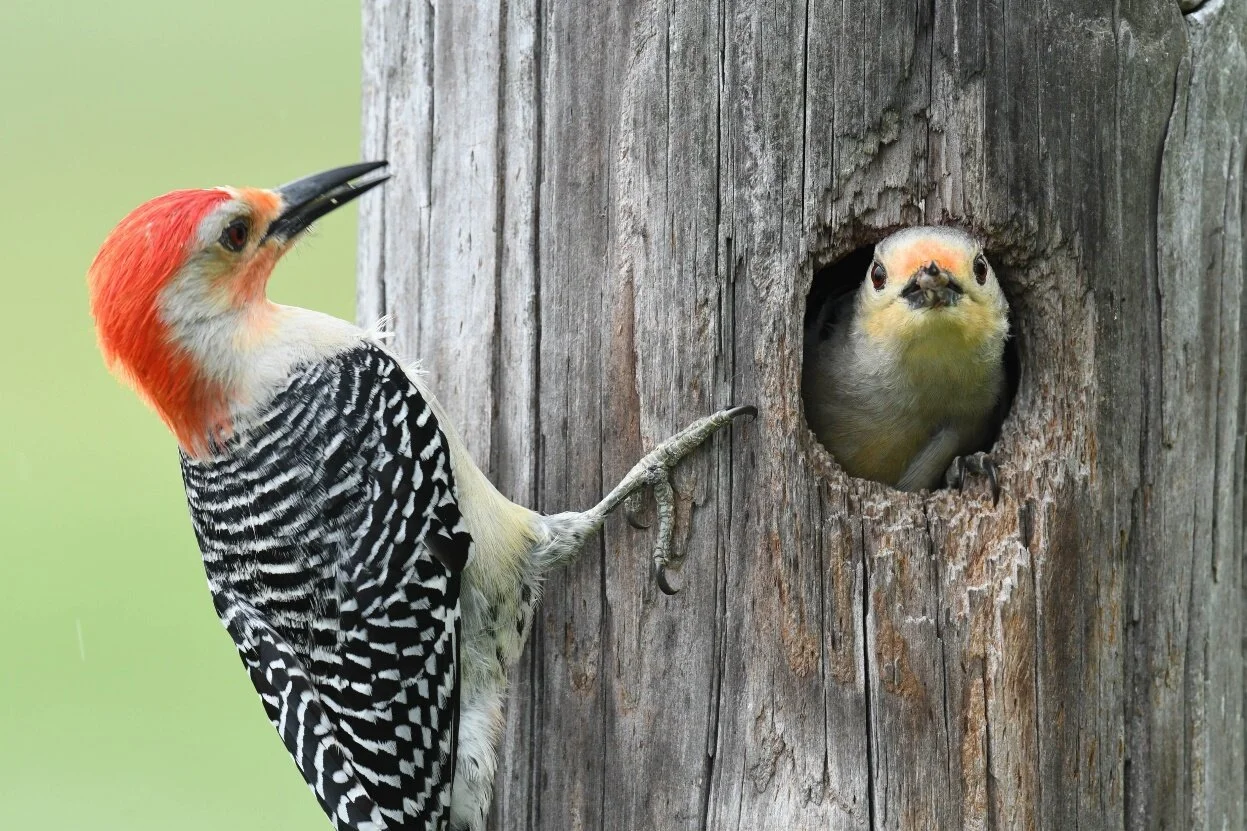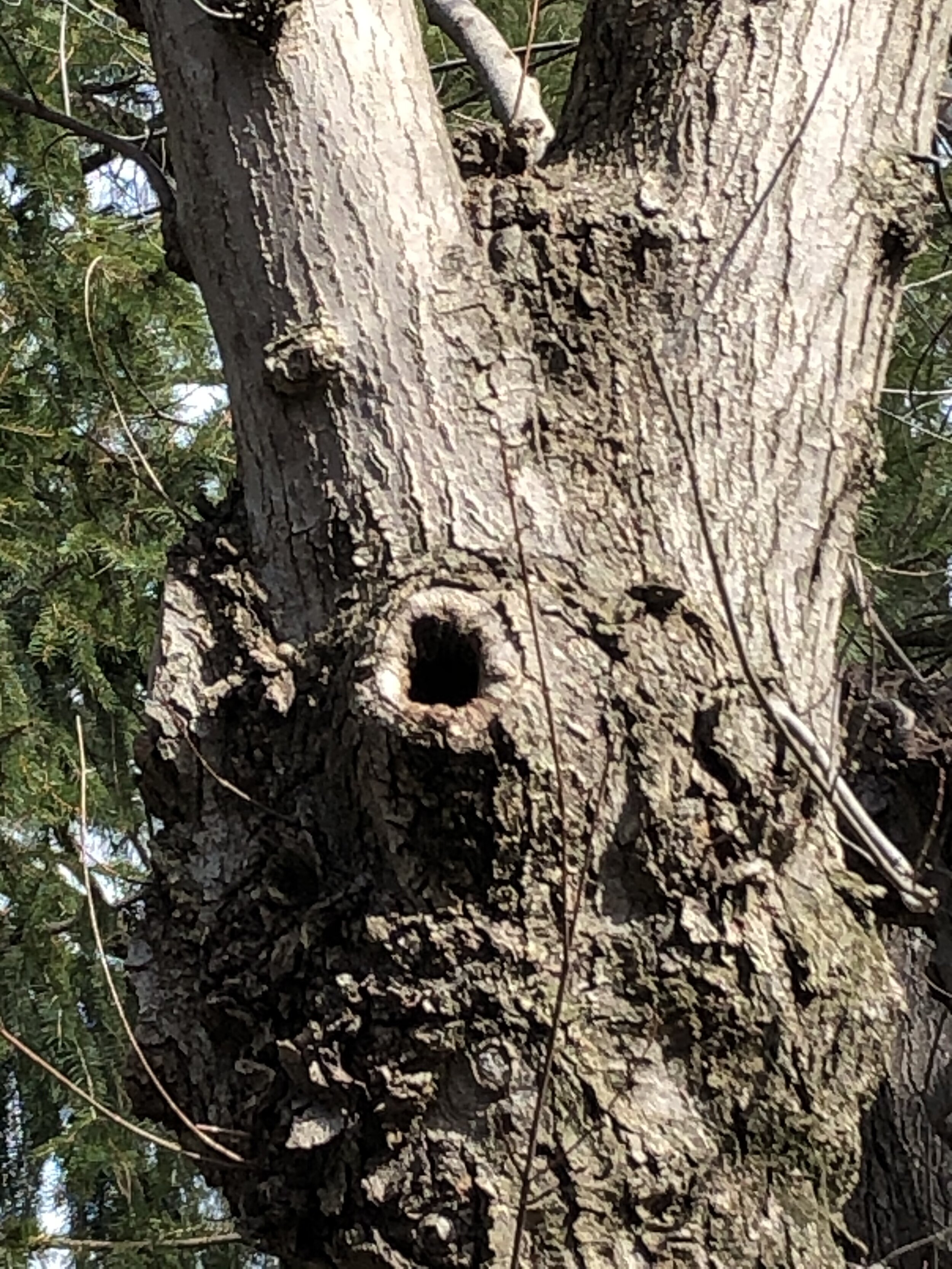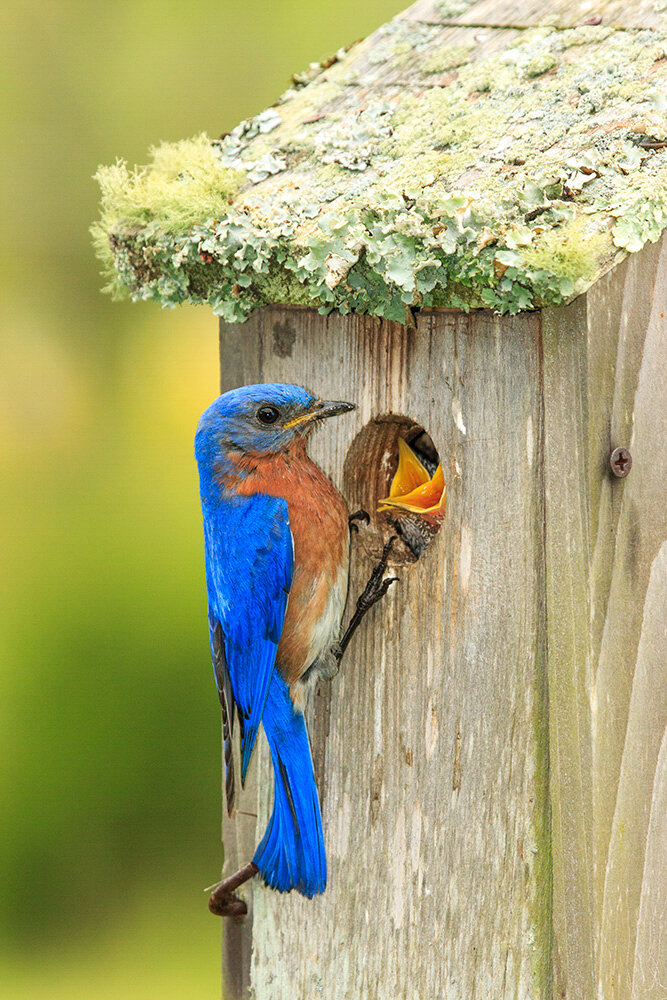Annual Audubon At Home Ambassador’s Brunch features Larry Cartwright
Red-bellied Woodpeckers, Larry Cartwright
Encouraging cavity nesting birds in suburban yards requires knowledge of birds and insects and how to support them. Audubon at Home Ambassadors invited Larry Cartwright to share his expertise on February 20th at their Annual Brunch. AAH Ambassadors are a trained group of volunteers who make personal visits within our region to anyone who asks for advice about how to make their property more wildlife friendly.
Although Larry Cartwright was formally trained in Russian history, he has been a nature lover most of his life, with a special fondness for birds and bats. In addition, he is the compiler for the DC Christmas Bird Count, ASNV’s Winter Waterfowl Count, the Dyke Marsh Breeding Bird Survey and the Huntley Meadows Eastern Bluebird Nest Box Program. At home, he uses his own suburban yard as a case study in how to transform property to attract nesting birds and other wildlife. Among the lessons he’s learned:
Avoid manicured monocultures in open spaces by planting a diversity of native plants that attract insects which in turn will attract birds. Reducing the use of pesticides is essential to encouraging a heathy balance of plants, insects and birds.
Native Plantings, Larry Cartwright
Don’t be Overly Tidy and instead, leave the leaves and dead plants for winter foraging, shelter and spring nesting materials. Adding a water source and a brush pile will attract even more birds. Sometimes neighbors or HOAs complain about naturalized landscapes they perceive as unkept. Larry’s solution is to plant colorful flowers, like Zinnias facing the street and talk with his neighbors about the purpose of his yard – to improve habitat. Loss of habitat is the most serious threat facing birds today.
Couded Sulpher with Zinnia, Larry Cartwright
Snags are essential to a healthy habitat. A snag is a dead tree or dead parts of an upright living tree. They are used by cavity nesting birds and many other animals such as Raccoons, Flying Squirrels and Big Brown Bats. Snags also attract insects, mosses and fungi when they decompose. Taller snags are especially useful to raptors such as Red-tailed Hawks as look-outs for prey and to attract potential mates.
Cavities, Larry Cartwright
Learn how to maintain snags by only removing them if they threaten homes or harbor a disease or infestation that could spread. If they do fall to the ground in a wooded area they will return nutrients to the soil which aids the growth of new plants. Even if you must remove a dead tree, you can leave the stump for ground foraging cavity nesters like Pileated Woodpeckers and Northern Flickers. Larry recommends having at least 3 snags per acre.
Understand the two groups of cavity nesting birds. In the U.S. and Canada there are over 85 avian species that use cavities for food, shelter and nesting and 25 of them can be found in Northern Virginia.
Primary cavity nesters, including all woodpeckers, excavate their own cavities. Some smaller birds such as Carolina Chickadees and White-breasted Nuthatches can enlarge existing holes if the wood is rotten enough.
Pileated Woodpeckers, Larry Cartwright
Secondary cavity nesters do not excavate their own cavities but rely on broken off limbs or those created by other birds. Larry’s backyard favorites are the Great Crested Flycatchers who use dried plant material and snakeskins in their nests. The snakeskins are probably used to deter predators. Barred Owls have found homes in his neighborhood too, but not Eastern Screech-Owls even though they are also secondary cavity nesters. Wood Ducks and Hooded Mergansers use cavities but they need to live near water. Another cavity nester that prefers water is the Prothonotary Warbler. They nest along the Potomac, larger tributaries and inland marshes. Other species you might attract if you have enough open space are Eastern Bluebirds and Tree Swallows.
Great Crested Flycatcher, Gary Rasmussen/Audubon Photography Awards
Using nest boxes to attract birds requires the right habitat. Most residential areas do not offer enough foraging areas for birds that need open spaces and often there is severe competition from introduced species like House Sparrows. Larry’s yard does not have enough open space for blue birds and swallows but he does host nesting House Wrens and Mason Bees.
Eastern Bluebird, Hazel Erikson/Audubon Photography Awards
Be aware of what your habitat will support and the challenges for you and the birds. Northern Virginia is a rich home for numerous cavity nesting birds but it is also overrun with non-native plants like Porcelain Berry and English Ivy that degrade habitat. Learning about these invasive plants and removing them is an ongoing effort in Larry’s yard.
After habitat loss, the 2nd most serious threat to birds is free-roaming cats which kill about 2.4 billion birds per year in the U.S. Discussing your concerns with neighbors is a good beginning.
The effect of deer browsing on tree seedlings has degraded our woodlands. If seedlings do not grow then there will be no replacement oaks and other large trees to support cavity nesters in the future.
Read more about Larry’s talk and the value of dead wood in this article by Glenda Booth.
Do you want to make your yard more wildlife friendly and attract to cavity-nesting birds? Visit our Audubon at Home page and request a consultation with an Ambassador.








